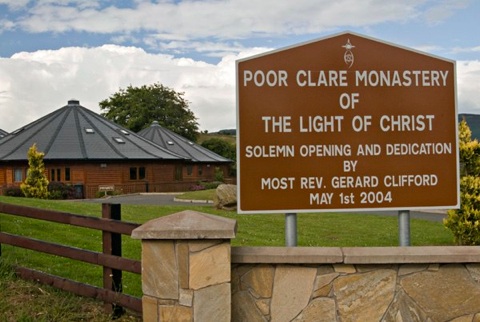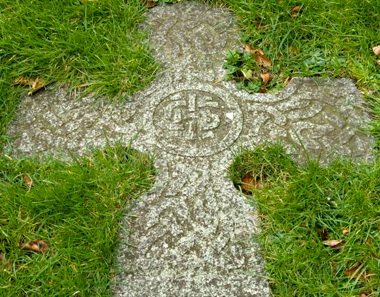Community History

The Poor Clares at Faughart trace their origins directly to Clare of Asissi and the community of sisters at San Damiano.*
Although Franciscan presence in Ireland dates back to the early days of the Order when Friars arrived shortly before the death of Francis, sources for the presence of Poor Clares in Ireland in pre-Reformation times are sparse. The Annals of the Four Masters suggests there were Franciscan women in Ireland as early as 1301 and a manuscript held in the Bodelian Library at Oxford lists among the houses of the Franciscan Order in Ireland “three monasteries of St. Clare”, but most all of the documentation and material remains (archaeological) associated with the origins of Poor Clare life in Ireland have been irretrievably lost.
The dissolution of the monasteries under Henry VIII in the mid-16th century wiped away medieval monasticism in Ireland. Following the Reformation, both English and Irish communities of religious, forbidden to exist in these countries, established houses on the Continent.
The 1609 foundation of a Poor Clare community at Gravelines, a small town on the Northern coast of France in Flanders, drew both English and Irish women. In 1620 Martha Cheevers, a twenty-one year old Irish woman, was professed there. It appears that from the beginning of the Gravelines foundation it was understood that after their period of formation the Irish women would seek to establish a Poor Clare community for Irish women with the intention of returning to Ireland to make a foundation there. Within a few years four other Irish women were professed and by 1626 these Irish Poor Clares made a foundation first at Dunkirk, and later moved up the coast to Nieuport.
Road to San Damiano, © Carrie Mitchell
During a brief period of religious toleration under the Stuart kings, the Irish Friars restored seven of their former communities in Ireland and urged the Poor Clares to return. On 13 June 1629 the Nieuport community arrived in Dublin and were the first community of nuns in Dublin in over a century. Within little more than a year the community grew from seven to nineteen members. But changing political circumstances required the community to seek safer locales. First, after leaving Dublin, the community relocated near Athlone and named their new monastery “Bethlehem”. Later some members of the Bethlehem community were to establish a monastery in Galway town.
Before long the number of women in the Bethlehem community increased to thirty sisters. In 1639 seventeen members made a foundation in Drogheda, where their numbers there increased so rapidly that several other foundations were soon made in Wexford, Waterford, Kilkenny and Limerick before the Confederate Wars (1641-1649) and the Cromwellian campaign in Ireland (1649-1652) killed clergy, attacked the monasteries and dispersed the sisters.
It was during these years, when the political climate was volatile and life for Irish Catholics was perilous, that a number of Galway women entered the Bethlehem community. Soon after, when “leading citizens of Galway” requested a Poor Clare foundation be made in the town, fifteen women from Bethlehem established a foundation in Galway in January 1642. Later, in 1649 the sisters petitioned the Corporation of Galway for a piece of land for a monastery, Oilean Altanagh, an island In Lough Corrib, known to this day as “Nun’s Island”. On the same day the Corporation of Galway granted the Poor Clares’ petition for the land (as a “free grant for ever”), Cromwell left England to destroy, decisively, Catholicism in Ireland. Galway was the last city to fall to Cromwell’s troops and in 1652, as plague and hunger spread, the city surrendered. Nun’s Island was burned and the sisters dispersed, some fleeing to exile to Poor Clare monasteries in Spain or on the Continent, while others stayed in Ireland, scattered among relatives and friends.
Between 1691 and 1813 the Galway community experienced continuing persecution, disruption and dislocation. But in 1712, at the invitation of the Archbishop of Dublin, Dr. Edmund Byrne, six members of the Galway Poor Clare community made a foundation in Dublin in Channel Row. Government harassment continued during this time and in 1715 they had to relocate to North King Street, where they were able to stay until 1750, later moving to Dorset Street in 1752. Life for religious women was difficult during Penal times and the government made countless raids of the convent. In order to protect and support themselves the nuns began to take in lady boarders and girls for education. Several times the sisters and the lady boarders were apprehended and searches were conducted of the convent for any emblems or signs of religious profession. As a result the sisters had removed the monastic grilles and no longer wore the habit.
* 1271, Kienshein founded from Assisi; 1283, Alsback founded from Kienshein; 1289 Gnadental founded from Alsback; 1289, Trier founded from Gnadental; 1453 Antwerp founded from Trier; 1455 Veer founded from Antwerp; 1581, St. Omer founded from Veere; 1609 Gravelines founded from St. Omer; 1625, Dunkirk founded from Gravelines; 1627, Nieuport founded from Dunkirk; 1629, Cooke Street, Dublin, founded from Nieuport; 1631, Bethlehem (Athlone) founded from Merchants Quay/Cooke St. Dublin; 1642, Galway founded from Bethlehem; 1712 Channel Row, Dublin founded from Galway; 1715 North King Street, Dublin found from Channel Row; 1750 Dorset Street, Dublin founded from North King Street; 1804 Harold’s Cross, Dublin founded from Dorset Street; 1830 Newry, founded from Harold’s Cross, Glasthule (Dunlaoire) and North William Street; 1883, Waverley, NSW (Australia) from Newry; 2004, Upper Faughart, Dundalk, from Waverley.
Sources for this section include: M. R. MacGinley, A Lamp Lit: History of the Poor Clares Waverley, Australia 1883-2004 (Strathfield, NSW: St. Pauls Publications, 2005); Sisters of St. Clare: A Brief History (Published by Sisters of St. Clare, 1985).
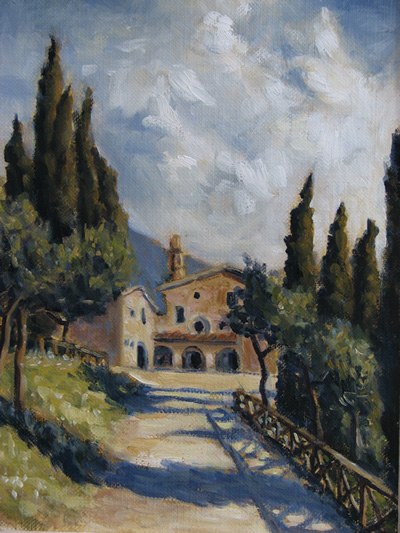
The early nineteenth century brought a new series of challenges to Ireland, this time economic. Throughout the country unemployment was widespread. In Dublin great numbers of citizens were unemployed, many of the upper class left the city, and children were orphaned, suffering from want and deprivation. This became known as the era of the “Dublin slums”. In response to changing economic and cultural conditions religious life in Ireland was also changing rapidly and radically. Women’s monastic communities were no longer the only option for women seeking to enter religious life. The Presentation Sisters (1775), the Sisters of Charity (1815), and the Sisters of Mercy (1831) were founded during this period and devoted themselves to active ministry among the poor. From 1750 onwards, membership in the older enclosed orders began to decline, while the newer, active communities were increasing in numbers. Of the Poor Clare communities in Ireland, only two survived: the Galway community and the community in Dorset Street.
Like others in Dublin, the Poor Clares experienced economic uncertainty, and in 1803, when the community in Dorset Street was on the brink of dissolving because they were unable to meet lease payments, a wealthy benefactor, Denis O’Brien, paid their rent for one year. Mr. O’Brien’s daughter, Maria, was the principal benefactor of an orphanage and had been hoping to find a religious community to run it. Through the mediation of Fr. Michael Kinsella, ofm cap, Dublin Archbishop John Thomas Troy proposed the matter to the Dorset Street sisters and they immediately accepted. Within a short period of time two significant events took place: a property for the convent and the orphanage was found in Harolds Cross and Pope Pius VII, in May 1804, granted a papal brief of dispensations for the sisters for the new form of life they would be living. Further papal rescripts were granted in 1807, 1808 and 1814.
Over the next decades the demand for schools, especially for the poor, increased. In 1829 the Harolds Cross community was invited by Dr. Thomas Kelly, Bishop of Dromore, to make a foundation in Newry, an important port town in Co. Down. This was to be the first convent established in Ulster, north of the Boyne, since the Reformation. In Newry there was an urgent need for educating local, poor girls. So great was this need that enrollment in the school quickly swelled to four hundred students and kept growing.
What you hold, may you always hold, what yo do may you always do and never abandon.
But with swift pace, light step, unswerving feet, so that even your steps stir up no dust,
may you go forward securely, joyfully and swiftly, on the path of prudent happiness.
- St. Clare
As often happened in the planning and establishment of new foundations in far away locales and on different continents, history records there was a mixture of unexpected events, misunderstandings, missionary zeal and clear-headed pragmatism that marked these new beginnings. A foundation in Australia was a momentous step for Irish Poor Clares, whose monastic life and practice meant that a new foundation would become completely independent of the founding community, involving a legal separation and negotiated conditions.
After months of conversations, much prayer and ongoing discernment in the communities in Cavan, Keady and Newry, two Poor Clares and a lay sister from Keady (Srs. Mary Antonia O’Hare and Mary Aloysus O’Hare, and a lay sister, Mary Patrick Murray) and three Poor Clares from Newry (Srs. Mary Teresa Lawless, Mary Dominic Cunningham, and Mary Francisc Sloane) volunteered for the new foundation and sailed for Sydney from Gravesend, England on 4th October, the Feast of St. Francis. The ship entered Sydney Heads 23rd November 1883 and the sisters were met on board and welcomed by Franciscan Friars, Sisters of St. Joseph, and a group of women from Waverley and Randwick.
These six courageous and pioneering women established the first Poor Clare foundation in Australia. They had come to open a school in Waverley, but did not realize that they were expected also to establish a convent at Randwick and take over a non-funded parochial school there. Establishing a house at Randwick posed a considerable dilemma. All Poor Clare monasteries were autonomous and a “branch house” network, in which dependent houses were linked to a central mother house, was an entirely foreign structure to Poor Clares and no such system was envisaged or provided for in their Constitutions. The Waverley Poor Clares, isolated from their founding and mentoring communities were confronted with a difficult decision. In the end, no convent was opened at Randwick but the sisters did staff the school. This required another departure from their usual monastic practice, daily travel to and from Randwick school, a breach of the monastic enclosure observed by Poor Clares. But, there was no turning back. Just as their sisters had done in Ireland for centuries, the women in this new foundation had the vision and the courage to continue to interpret, adapt and live their vocation in changing circumstances. They received the support of the Church, through the persons of the Franciscan Mission Superior, Fr. Dunne, and his vicar-general Dr. Sheridan, and in their annals the sisters speak about adaptation in this way, “the formula of our Vow of Enclosure fully admits of our doing so under the circumstances in which we are placed at present.”
Almost eighty years after the six Irish Poor Clares made the new foundation in Waverley, the Irish Abbess General, Sr. Rita McGee, invited the Australian sisters to federate with them. No sister from Ireland had visited Australia since the last pioneer sister arrived at Waverley in 1885 and regular correspondence between the two communities does not appear in the archives until the 1950s. After the first Federation meeting was held in Ireland in 1974, nine other meetings were held in Australia, Ireland and the United States. The advent of Federation provided a variety of interactions and relationships between the Irish and Australian sisters that demonstrated that although each had developed separately and in different locales, they had lived the same charism. And in 1991 the sisters in Ireland extended an invitation to sisters in Australia to attend their General Chapter.
The sisters in Monasterevin who had been pursing the eremitical contemplative life found mutual support in the Waverley Poor Clares and felt the Spirit urging them to link more officially with them. The journey began with no thought of transfer, but after considering a variety of options the transfer of jurisdiction was requested in 1999, although not officially granted until 2002. The five Irish sisters then entered a canonically required three year period of integration that provided for continuing discernment for all involved. In 2005 the Irish sisters were officially accepted into the Order of St. Clare - Poor Clares, Waverley, NSW.
It had always been the intention of the Waverley Poor Clares that this new community pursue their contemplative life in Ireland. And after much prayer and some extraordinary signs from God, it was discerned that the Spirit was calling the Waverley Poor Clares to establish this contemplative hermitage way of life close to the ancient shrine of St. Brigid that commemorates her birthplace and the Hill of Faughart, the location of St. Moninna’s first women’s monastic settlement in Ireland, near Dundalk in Co. Louth. The area has been a site of pilgrimage for hundreds of years and today it remains one of the primary sacred places in Irish Christian history. The monastery is located, literally, on the border between the north and south of Ireland and serves as a symbol of peace and reconciliation, and a place where people can come for prayer, spiritual direction, healing prayer and spiritual conversation.
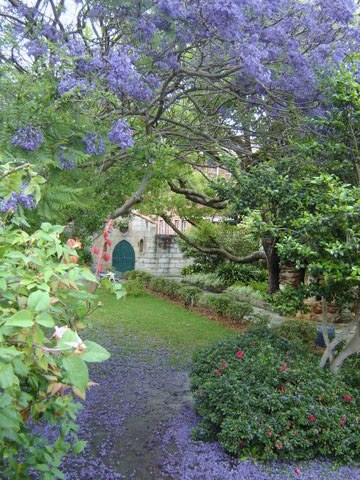
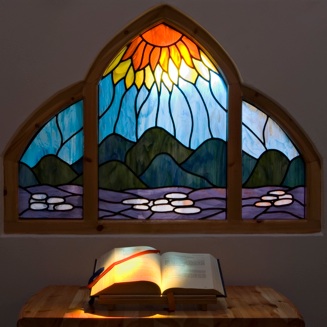
A few years later, at the 1997 General Chapter in Waverley, the community entered into a discernment process to listen and to discover the ways the Spirit was calling them to live the Gospel into the new millennium. Their discernment was expressed in two Chapter mandates:
-
1.To have a community willing to explore and discern a “new, daring and imaginative” way of living the charism in today’s world;
-
2.To establish ways to bring vitality to the faithful expression of the charism based on our living of poverty, contemplation, sisterhood and mission.
The first mandate was explored in relation to a lifestyle based on St. Clare’s Rule and St. Francis’ Rule for Hermitages. A community within the Sisters of St. Clare in Monasterevin, Co. Kildare, composed of Margaret McGill, Rose McSherry, May Mahon, Briege O’Hare and Joan O’Hare, had already been living this form of eremitical contemplative life based on the Franciscan sources for a number of years as the result of a Chapter mandate from their General Chapter in 1991, the same Chapter that Australian sisters had observed. Close contact between the Monasterevin community and the Waverley sisters had grown, and at the 1997 Waverley Chapter the sisters elected to explore this way of life in their own Australian context. The site chosen was that of the convent and grounds of Riverstone, NSW, where the first hermitage was established there in 1997.
St. Clare’s, Waverley, NSW
St. Clare’s, Waverley, NSW

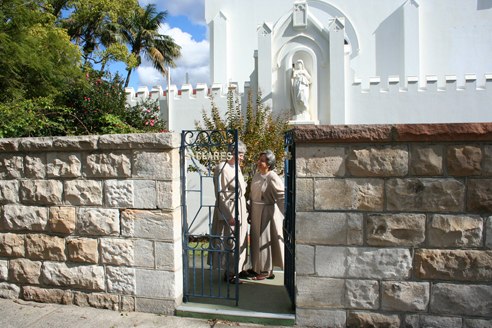
St. Clare’s, Waverley, NSW
Just as the previous centuries had required Irish Poor Clares to remain open to the Spirit and live the gospel in ways that were creative and courageous, rooted in God’s providence, so new adaptations were again required. The transition from the historically understood contemplative Poor Clare life to one that included an element of active involvement in an external apostolate required another papal rescript in 1838.
Even though there was initial religious hostility toward the Newry community, including a damaging attack on the convent, the community increased in size and other foundations were established from Newry including Cavan (1861) and Keady (1871), and in 1883 a request came from the Australian Franciscan Friars for competent teaching sisters to establish a foundation in Waverley, NSW, Australia.
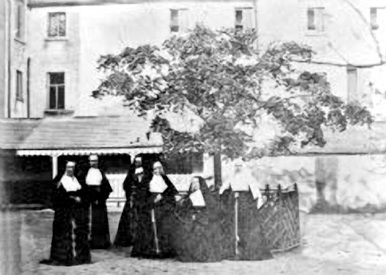
Poor Clares, Newry, Co. Down
During the early years, the Australian community sought to find permanent accommodations for themselves and develop their schools in NSW. Other sisters from Newry joined the small Australian community in 1885 and in 1891 Sr. Mary Clare Power became the first Australian woman to be professed. Over the next decades the community sought to enlarge St. Clare’s College and was asked to serve other schools in New South Wales, Victoria, and Tasmania. Throughout the next century the Waverley Poor Clares remained a praying presence in the Australian Church, and they continued to minister to the educational needs of several generations of students.
The Monastery of the Light of Christ was officially dedicated on 1 May 2004 by Bishop Gerard Clifford, Bishop of Faughart, inaugurating a new era of Poor Clare life in Ireland.
Visit our sisters in Waverley:
